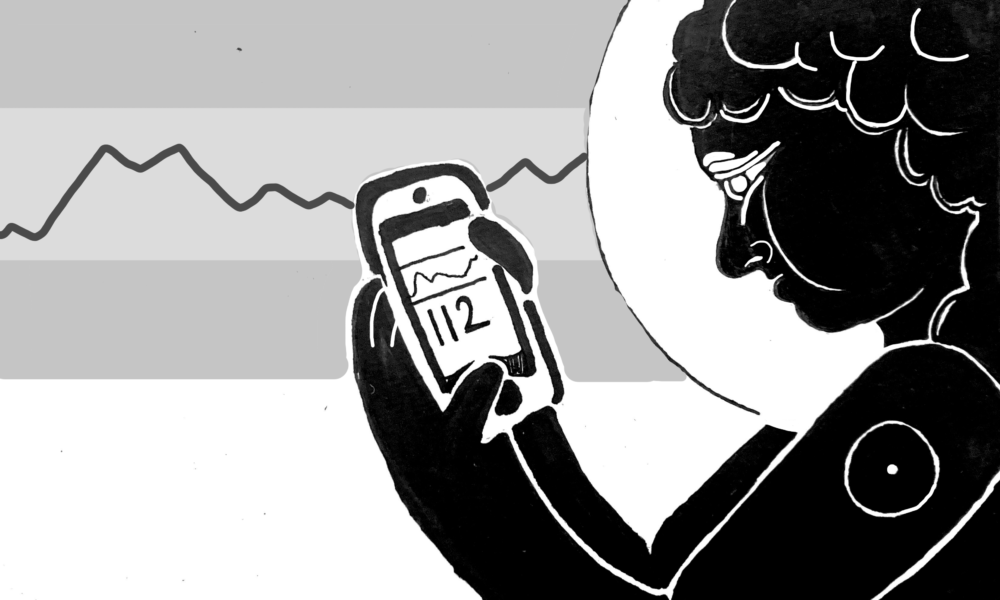Living with diabetes goes beyond managing its symptoms. It involves grappling with social stigma, the necessity of a continuous supply of insulin, the lurking fear of hypoglycemia, and the financial burden of disease management in failing healthcare systems. Recent advancements in diabetes technology aim to assist with insulin adjustment and alleviate the mental burden diabetes patients face. A recently published paper titled “Exploring Technology’s Influence on Health Behaviors and Well-being in Type 1 Diabetes: a Review” features insights on such developments. This paper was written by a team of dedicated researchers including Meryem Talbo, a PhD candidate in McGill’s School of Human Nutrition.
Type 1 diabetes (T1D) accounts for approximately five to 10 per cent of all cases of diabetes. In contrast to type 2 diabetes, where insulin production is impaired, T1D is characterized by the complete absence of insulin production. This condition puts T1D patients in greater need of ongoing technological assistance.
“We do this research to serve the people,” Talbo stated in an interview with The Tribune, emphasizing the shift in the lab’s research focus from chronic or long-term complications such as glaucoma and renal failure to hypoglycemia after consulting with a patient group.
According to patients, hypoglycemia—a condition in which blood sugar drops to a dangerously low level—is a more urgent and significant barrier as its symptoms are coupled with the chronic fear and anxiety of its development. The symptoms of hypoglycemia are categorized into three stages ranging from mild to severe, including convulsions, fainting, and loss of consciousness. Immediate treatment, typically involving administering rapid sugar or glucagon, is crucial but requires a trained healthcare professional who is educated on hypoglycemia treatment. This is a significant source of stress for patients, as the consequences are severe and support is not always readily available and reliable.
To address this concern for patients, the paper reviewed two main technologies used for the prevention of hypoglycemia and promotion of health behavior changes. The first is a continuous glucose monitor. It tracks glucose levels in the interstitial fluid—body fluid found in the spaces around cells—providing early alerts for potential hypoglycemia. The second is an insulin pump, which is currently more widely known. Because it delivers a consistent insulin dose through a catheter placed in the abdomen, the pumps are a less intrusive alternative to insulin injections. Recent advancements, particularly in automated insulin delivery (AID) systems, integrate sophisticated algorithms, aiming to reduce management burden while promoting healthy eating habits.
“The ultimate goal is for the patients to sustain their lives without being inconvenienced by the disease, practicing health behavior [and] self-management,” Talbo emphasized.
Given increasing life expectancy and the lifelong nature of diabetes management, proactive disease management can prevent long-term complications and relieve economic burdens, benefiting patients in the long run.
The review extends to digital platforms in the global stage, showcasing TangtangQuan, an app developed specifically for T1D patients in China. This application provides a personal diabetes diary, dietary panel, diabetes education modules, and a peer support community. A cohort study including 693 adults with T1D observed glycaemic improvements after 12 months of app use. In North America, the Bolus Calculator app, developed by BC Children’s Hospital, is widely used for determining the insulin dosage based on the nutritional composition of meals by using a photo-based insulin dosage estimation system.
The review highlights the life-changing power of these technologies but also emphasizes the importance of acknowledging patients’ needs and maintaining an open channel for feedback as they develop. The path forward involves continuous research, patient-focused solutions, and collective efforts to ensure an improved quality of life for those living with diabetes.








Leave a Comment